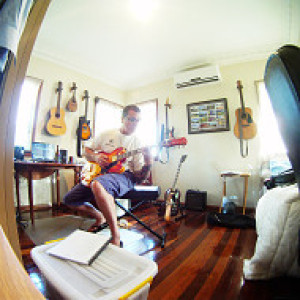Platemaking
Platemaking
As Wingpig rightly pointed out, I didn?t go into any detail about how plates are made in prepress. So you will have to forgive me for backtracking a little. The frontend of the printing press will have to wait till tomorrow.
Plates are basically sheets of aluminium with a light sensitive coating on one side. Not dissimilar to good old photographic paper. The plate coating is only sensitive to certain types of light though. On the left of the image is me loading a plate into the imagesetter. The imagesetter is a very expensive piece of equipment which consists of a drum and a laser or LED. The when I load a plate the imagesetter automatically wraps it around the drum inside. When it has secured itself (how, I don't know), the drum starts to spin at very high speed and once it is going flat out the LED or laser starts to expose the image for the plate horizontally. This process takes about 5 minutes.
When the plate is exposed it is released out of the backend of the imagesetter and enters the processor where chemicals remove the non-image area on the plate. As you can see from me in the centre of the pic I am holding up an exposed and processed plate, conveniently facing outwards for all of blipland to see. I usually check the plate very carefully at this stage. I tiny bit of grit or dust on the imagesetter drum can cause "hot spots" on the plate. The tolerances are very fine.
I then bend the plate so it fits onto the drum of the printer, and then get a ruler and measure my bleeds, trims, size, and of course check for anything that looks incorrect.
The job I chose to plate for tonights blip is in-house promotional material. I had to do all the design after getting a concept form the boss. Design is like pulling teeth for someone like me (I am not creative), but more importantly I did most of the photography as well. I am quite pleased that I am in a position to take a project from concept to completion and be able to control it all the way through the various stages of printing. This one has been a bit of a headache though.There are normally 4 plates to a job (CMYK). This one has 2 sides with 8 plates for each becuase it has metallics and varnishes. Probably a recipe for disaster because each side has to go through the press twice.
Here is something interesting: Imagesetters have trouble exposing gradients which run vertically from top to bottom on a page because they expose from left to right. Vertical gradients are often not as smooth as horizontal, depending on which way they are exposed.
Notice how I managed to keep my face out of all the exposures?
- 1
- 0
- Canon PowerShot A550
- 1/33
- f/2.6
- 6mm
- 200

Comments
Sign in or get an account to comment.


